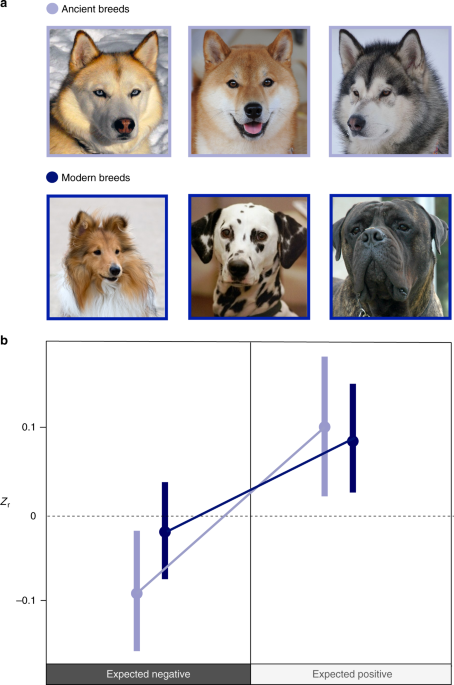
Dog domestication has profoundly influenced various aspects of canine behavior, particularly in contrast to their wild ancestors, the wolves. This report synthesizes findings from multiple studies to explore the behavioral changes that have emerged due to the domestication process.
Cognitive Abilities

Domestication has been linked to notable shifts in cognitive abilities between dogs and wolves. In a comparative study, it was found that wolves generally outperform dogs in their ability to follow causal cues. For example, wolves showed superior skills in understanding and employing causal relationships compared to domesticated dogs, suggesting that certain cognitive skills have diminished in domesticated species due to the facilitated survival context provided by humans[3]. This aligns with the information processing hypothesis, which posits that domesticated animals undergo a relaxation in selection pressures that previously favored independent problem-solving abilities[4].
Conversely, dogs exhibited strengths in social cognition, particularly in understanding human communicative cues. Dogs have been shown to be particularly adept at interpreting human gestures and cues, which is crucial for their interaction with humans. This ability contrasts with wolves, who rely more on observing the behaviors of both humans and conspecifics and have demonstrated proficiency in following non-communicative human gaze[3][4].
Social Interactions and Attentiveness
The social dynamics within wolf packs also differ significantly from those in domestic dogs. Wolves display a complex social structure marked by cooperation, where both dominant and subordinate individuals contribute to the pack's survival and cohesiveness. In wolf packs, individuals maintain strong social bonds and demonstrate social tolerance, often acting cooperatively to hunt and raise pups[4]. In contrast, domestic dogs, influenced by their reliance on humans for resources, have developed behaviors that prioritize human interaction over conspecific relationships. This shift illustrates a reallocation of social attentiveness from conspecifics to humans, indicating that domestication has directed the innate social dynamics of dogs towards interspecific cooperation instead of intraspecific relationships[4].
Research findings highlight that domesticated dogs are generally less aggressive towards humans than wolves, which may be attributed to their selective breeding for sociability and docility. Studies also suggest that while free-ranging dogs might exhibit some social behaviors reminiscent of wolves, their interactions with humans tend to be more frequent and positive compared to wolves, who display greater wariness and independent behavior[2][4].
Physiological and Behavioral Traits
The domestication syndrome characterizes a set of physical, behavioral, and physiological traits associated with domesticated species. For example, traits such as increased docility, reduced body size, and heightened sociability are prominent in dogs compared to their wild wolf counterparts. These traits are a result of selective pressures that favor tameness and friendliness, which facilitate a closer bond with humans[4]. The changes in behavioral expression are seen in traits such as playfulness and fearfulness, which are more exaggerated in ancient breeds of dogs than in modern breeds, suggesting that domestication has altered the behavioral expression of these traits across different dog breeds[1].
Furthermore, studies indicate that the behavioral architecture of dogs has been affected by selective breeding practices aimed at specific outcomes, such as appearance or working ability. This selective breeding has led to a decoupling of previously correlated behaviors within breeds, particularly regarding aggression and sociability, leading to a varied expression of behaviors compared to wolves[1].
Play Behavior and Learning
Play behavior in dogs also differs from that in wolves. While both species engage in play, the characteristics and social dynamics surrounding play vary greatly. Wolves utilize play to establish social hierarchies and maintain relationships within their packs. The balance of power during play is indicative of dominance structures and mutual understanding among individuals[4]. In contrast, dog play does not seem to adhere to such strict rules and often lacks the same level of reciprocal self-handicapping that promotes mutual understanding in wolves. Instead, dogs may engage in asymmetrical play, reflecting their often more competitive nature influenced by domestication[4].
Conclusion
The domestication of dogs has led to profound alterations in their behavior and cognition compared to wolves. While domesticated dogs excel in social cognition and human interaction, they have compromised certain independent problem-solving skills. The shift from conspecific social dynamics to those involving humans underscores the impact domestication has had on canine evolution and behavior. Overall, the divergence in behavioral traits and cognitive abilities illustrates the complex interplay of selective pressures and adaptation that has occurred through the domestication process, reshaping the social landscape of dogs in comparison to their wild ancestors.
Get more accurate answers with Super Pandi, upload files, personalized discovery feed, save searches and contribute to the PandiPedia.
Let's look at alternatives:
- Modify the query.
- Start a new thread.
- Remove sources (if manually added).